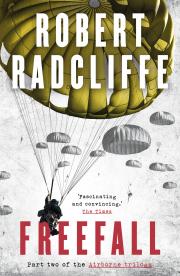Masters of the Air Full Trailer – An AVGeek Reacts!
In this video, Boney deep-dives into the trailer for Apple TV+’s ‘Masters of the Air’, slated for release in January. Analyzing various scenes, dialogues, and stylistic choices, we look at various elements of the show, from lead characters and their possible story arcs to the visual and emotional impacts of certain moments. Boney also highlights areas of interest, including the inclusion of historical events, and shares optimism about the presence of the ‘Red Tails’, Tuskegee airmen. However, the host expresses concerns about the show’s CGI and pacing. Mixed with humour and unique insights, the video offers a detailed breakdown and assessment of one of the most anticipated shows.
Trailer is © Apple TV+
Check out our interview with Col. Richard Bushong, who flew 28 B-17 missions with the 390th Bomb Group here: https://youtu.be/5Pk-6MY7ZOs
Check out our interview with the 390th Bomb Group Memorial Museum’s Executive Director Bill Buckingham here: https://youtu.be/3r4WJROQNAg
Become a Damcasteer on Patreon from just £3+vat. Stickers and ad-free podcast episodes are all part of the fun! Join here: https://www.patreon.com/thedamcasters
Please check out the latest from our sponsor, the Pima Air and Space Museum, through the links below: ★Visit the Pima Air and Space Museum’s website here: https://pimaair.org/
★Learn more about the Titan Missle Museum here: https://titanmissilemuseum.org/
★Find out who is in the Arizona Aviation Hall of Fame here: https://pimaair.org/about-us/arizona-aviation-hall-of-fame/
★Want to know how the Tucson Military Vehicle Museum is progressing? Find out more here: https://www.tucsonmilitaryvehicle.org/
The Damcasters © 2022 by Matt Bone is licensed under Attribution-ShareAlike 4.0 International



Recent Comments